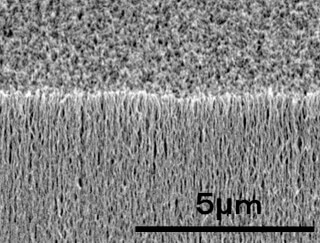The study demonstrated that absorption of black carbon nanoparticles from sources such as diesel fuel or printer ink causes an initial inflammatory response in lung cells

Researchers from the University of Iowa found that carbon black nanoparticles inhaled into the body cause lung inflammation and cell death. The research findings were published in the scientific journal Journal of Biological Chemistry.
The researchers explain that they expected to find one level of inflammation after exposing cells to carbon black nanoparticles. However, they were surprised to discover that the nanoparticles activated a special inflammatory process and killed cells in a way that further increased the severity of the inflammation. The study demonstrated that absorption of carbon black nanoparticles from sources such as diesel fuel or printer ink causes an initial inflammatory response in lung cells. The surprising findings came when the team of researchers discovered that these nanoparticles killed macrophages - immune cells in the lungs responsible for cleaning and fighting inflammation - in a way that further exacerbated the inflammation.
"Apoptosis (Apoptosis, programmed cell death, a natural process in which the cell disintegrates and dies upon reaching a certain age or as a result of health impairment) is one of the ways in which cells die when all the contents of the cell remain in the cell, and the cell simply continues to shrink into itself while the surrounding tissue remains protected," says the main researcher. "We believed that this is the process that occurs for carbon nanoparticles; But we were wrong. A different process took place, a process known as pyroptosis in which the cells burst and their contents spill out." This process may cause a secondary inflammatory response.
The researcher warns and says that the doses of the black carbon nanoparticles used in the experiments were much higher than the amounts to which a person is routinely exposed. "This does not mean that passing through a cloud of diesel gas will harm your lungs," explains the researcher. "This does demonstrate that there may be exposure to substances in our environment that may contribute to the development of lung inflammation."
Article Summary

2 תגובות
There is nothing new about this. It has been known for 40 years that coal dust is dangerous for breathing and even carcinogenic
http://www.morgenpost.de/web-wissen/article962844/Laut_Studie_kann_Tonerstaub_Krebs_verursachen.html
As a fine powder, toner can remain suspended in the air for some period, and is considered to have health effects comparable to inert dust. It can be an irritant to people with respiratory conditions such as asthma or bronchitis. Following studies on bacteria in the 1970s that raised concerns about health effects resulting from pyrrole, a contaminant created during manufacture of the carbon black used in black toner, manufacturing processes were changed to eliminate pyrrole from the finished product.
According to recent research, some laser printers emit submicrometer particles which have been associated in other environmental studies with respiratory diseases.
An unpublished study at the University of Rostock in Germany is reported to have found that the microscopic particles in toners are carcinogenic, similar to asbestos. Several technicians who had been working with printers and copiers on a daily basis were observed for several years. They showed increased lung problems.[4]